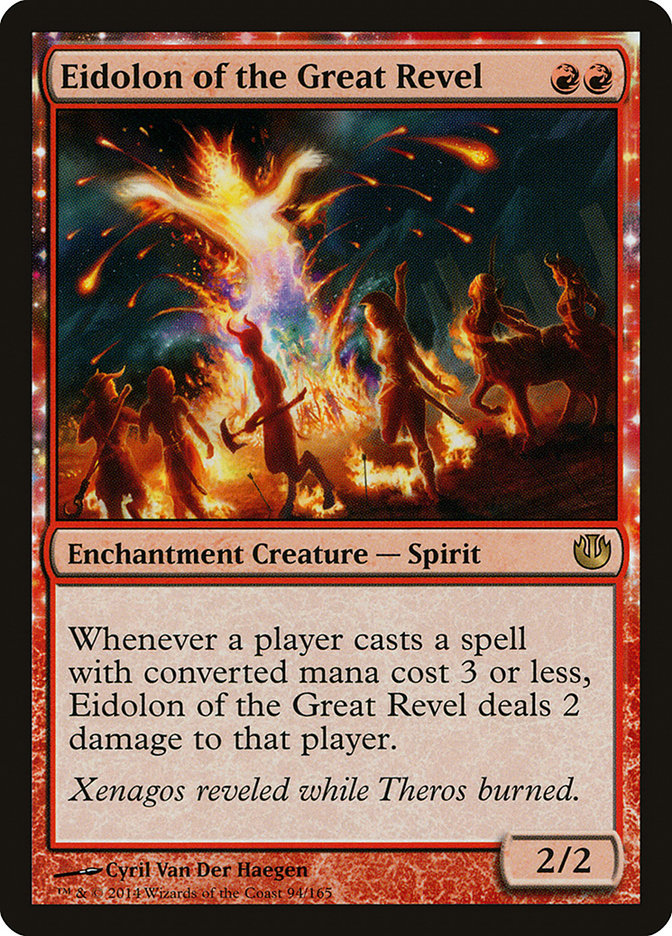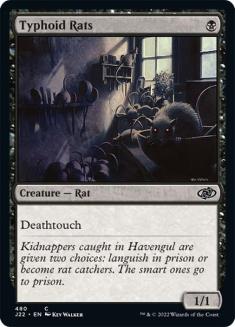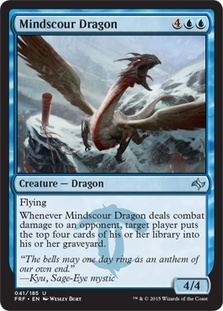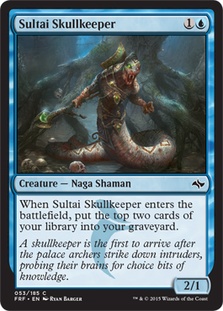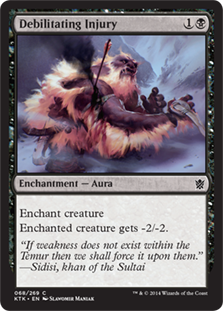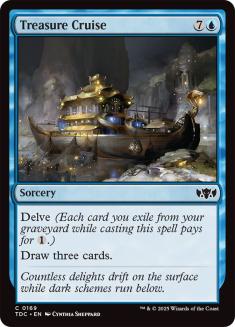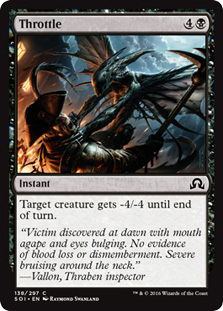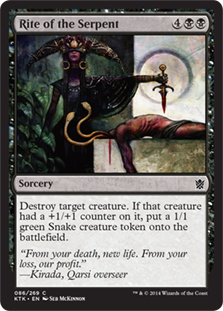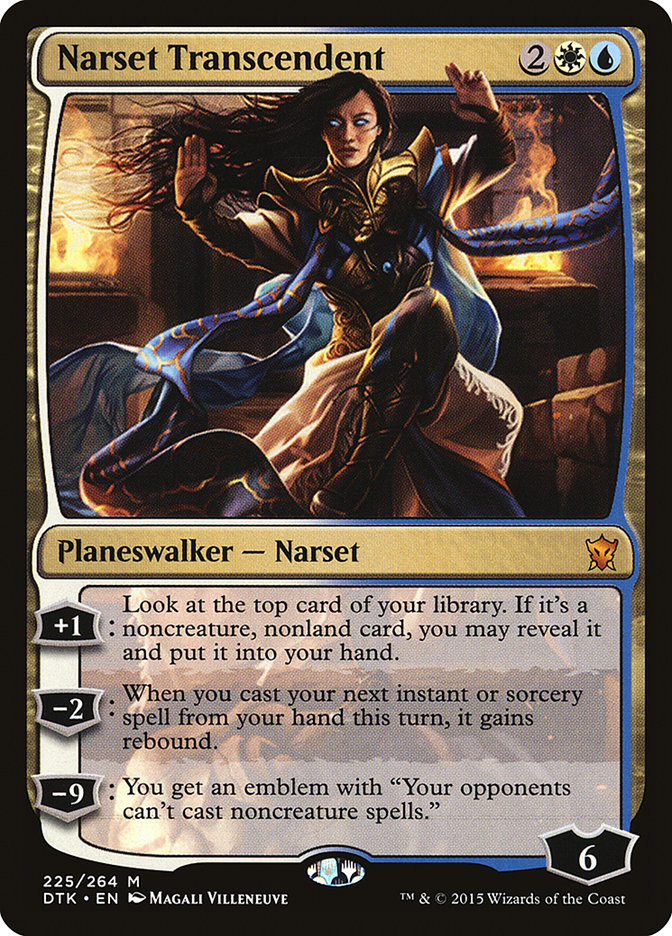As about 66% of you realized, last week’s bonus question was based on
the infamous “Monty Hall problem.” Made famous by Marilyn vos Savant and loosely based on the game show Let’s Make a Deal, the “Monty Hall
problem” has perplexed many with its backwards take on probability. In fact, thousands of very educated people – many with PhDs – would write in to
Marilyn’s column to tell her how stupid and incorrect she was with her correct solution.
As Magic players are much less interested in new cars and Monty Hall than Black Lotuses and Gerard Fabiano, I twisted the problem a bit. To recap:

You are on a game show called “Everyone’s A Winnar!” It is hosted by the enigmatic Gerard Fabiano.
You are in the final round, and there are three closed doors. Behind two of these doors are NM copies of the card Chimney Imp. Behind the third door is
a NM Beta Black Lotus, PSA graded 9.8.
You must choose a door, so you decide on door #2. Gerard (who knows what is behind each door) opens one of the doors you did not choose, door #3, and
reveals a Chimney Imp. He then turns to you and asks you a very important question:
“Do you want to switch your door to door #1? Or keep door #2?”

There were a few questions about the finer details of the question, but the goal of the question is to be a probability exercise. The implication was that
Gerard is not going to try to trick you in any way, and by all accounts this was to be a fair problem. Gerard will always reveal a Chimney Imp and will
always ask if you want to switch or not. While the real Gerard may be tricky, game show problem host Gerard is as straightforward as they come.
While many of you were quick to identify the problem as The Monty Hall Problem, and therefore, provide the correct solution, a good amount also would fall
into the trap. The common incorrect answers were either assuming that that probability didn’t change at all, or thinking that because there were only two
choices now that the odds had changed to become 50/50.
These are both incorrect, as the correct answer is to switch every time, no matter what. While somewhat confusing to grasp, here’s why:
The best way to think about it is to imagine that you have a 66.7% chance of hitting a Chimney Imp on the first shot. As long as you pick an Imp when
Gerard shows you the other Imp, you switch and win. You only lose by switching when you actually pick the Black Lotus, which only happens 33.3% of the
time.
Fellow SCG author Drew Levin, John Kerpan, and a few others outlined this solution quite nicely:
Choose Chimney Imp #1-
33.3% of the time you will choose Chimney Imp #1. Chimney Imp #2 will be revealed, and we have these results:
Stay – Lose
Switch – Win
Choose Chimney Imp #2-
33.3% of the time you will choose Chimney Imp #2. Chimney Imp #1 will be revealed, and we have these results:
Stay – Lose
Switch – Win
Choose Black Lotus –
33.3% of the time you will choose the Black Lotus. Chimney Imp #1 or #2 will be revealed, and we have these results:
Stay – Win
Switch – Lose
Once laid out, we can clearly see that staying only has one winning outcome, while switching has two. Switching gives us 66.7% chance to win, while staying
leaves us at only 33.3%.
A few people spoke to the psychology of the issue, saying that they would just stay because of how awful they would feel if they switched and ended up
being wrong. Even with the odds against them, they felt the possible feel-bads of picking the Black Lotus on the first shot and then throwing it away was
worth more than increasing the odds to win with a switch.
This mentality is the perfect example of why emotion and probability don’t mix.
As human beings we grow to trust our instincts. We learn a lot over the course of our lives, and when we come to new situations and must make a choice, our
gut will often chime in and try and lead us in the correct direction. A lot of times this is great, as we dig into a sort of unconscious competence to
guide us. However when it comes to issues of probability, our emotional gut reaction tends to be too illogical to be trusted. Numbers don’t lie, and it’s
important to be sure that we are relying on facts and math, not intuition, when probability is at the heart of the problem we are facing.
SCG Baltimore
New problem: You’re 8-1 going into day two of SCG Baltimore. You’re playing a Boros Burn deck you are very happy with and have an excellent shot at top 8.
What are the odds you go 0-3 in the first three rounds of day two to knock yourself out of top 8 right off the bat?
Yeah… about that.
Creatures (15)
Lands (20)
Spells (25)

While I was able to win the last three to salvage the tournament somewhat, I unfortunately missed out on top 16 on tiebreakers.
The deck is pretty similar to the list I won the Elite IQ with a few weeks ago, and as I wrote about that previously, I’m not going to go into too much detail about
it. The deck is quite good, and while there are a bit more hate cards like Timely Reinforcements floating around, they are beatable. A bigger issue is that
Splinter Twin decks have been getting a bit more popular, and their mixture of cheap removal and a reasonably fast combo can prove problematic.
So what went wrong?
After starting the day with a tough loss against U/R Splinter Twin, I would play against SCG’s own Todd Anderson the following round. He was on a Temur
Twin deck, and game 3 would see me make an incorrect attack with my Eidolon of the Great Revel that would seal my fate in a game I probably should have
won.
Eidolon is perhaps the most interesting card in the Burn deck, as it has such an impactful effect on the game and is quite difficult to use effectively.
Unlike in Legacy, you are going to take an extra 2-4 damage from your lands every game, and this coupled with the lack of Fireblast and the prevalence of
spells that cost more than three mana in our opponent’s deck makes Eidolon of the Great Revel much more of a liability. Knowing when to play Eidolon, when
to throw it away on a chump block, and what/how many spells your opponent can actually cast with it out is very important.
Ugin, the Drafted Dragon
With the main event of SCG Baltimore continuing into top 8 without me, I had some time to kill while Dave Reed and Dan Jessup played their respective
Premier IQs.
Aside: Amusingly enough, Dave and Dan would both finish in 12th place in their events, with Andrew Jessup finishing 12th place in the main event. This
meant that everyone in my car would finish in 12th place in their event (Standard Premier IQ, Legacy Premier IQ, and Modern Main Event, respectively),
while I was stuck in a lowly 18th place.
So what was I to do to kill some time? Something I hardly do ever anymore…
Draft!
A nice $10 draft seemed like the perfect way to end my day, as I could mess around and have some fun while my friends finished their events. I draft very
infrequently nowadays, and a nice low-pressure draft seemed like a perfect way to wind down my weekend.
We were seated, and I opened my pack looking for a card to guide me. I very much enjoy drafting decks, and I was really hoping to open some sort
of build-around me card I could just go all-in on from the start. I was not let down:
Well that’s a nice surprise. Not only did I open the most expensive rare in the set but also an almost unbeatable Limited card – assuming you can live to
cast it. My second pick would be a Temur Sabertooth, as I assumed that the Map the Wastes would table. This would be abandoned as my next five picks
solidified my plan:
We were all-in on U/B Mono-Ugin control.
I picked up a few more Sultai Skullkeeper to go along with a pair of Enhanced Awareness, and we were very well set up for a long game control deck with an
Ugin end game. We would kill things, trade off with our rats, draw cards, and kill more things until we eventually found our Ugin and won.
Over the next two packs, the plan would really come together.
While the cards surrounding the excellent removal and card draw were not spectacular, they all fed into the main goal: kill things, draw cards, survive
until Ugin.
Creatures (10)
- 3 Typhoid Rats
- 1 Shambling Attendants
- 1 Dragon's Eye Savants
- 1 Witness of the Ages
- 1 Mindscour Dragon
- 3 Sultai Skullkeeper
Planeswalkers (1)
Lands (17)
Spells (12)
- 1 Bitter Revelation
- 1 Disdainful Stroke
- 2 Treasure Cruise
- 1 Rakshasa's Secret
- 1 Throttle
- 2 Debilitating Injury
- 1 Rite of the Serpent
- 1 Whisk Away
- 2 Enhanced Awareness
Sideboard

The deck worked perfectly.
I didn’t drop a game, and I won every single game with Ugin with the exception of one–I unfortunately milled over the Ugin to a Sultai Skullkeeper, but I
was still able to put it away with massive card advantage, Mindscour Dragon, and Shambling Attendants.
Highlights of draft included:
· Setting up for Ugin next turn thinking I can’t possible lose. My opponent untaps and dashes Kolaghan, the Storm’s Fury, and I realize I probably can’t
win as Ugin does nothing to stop it. I untap and draw Disdainful Stroke. #betterluckythangood
· Beating a pretty good five-color deck with Silumgar, the Drifting Death, Savage Knuckleblade, double Abzan Guide, and many other powerful spells. Just
further goes to prove that no deck playing Savage Knuckleblade can ever win, no matter how good it looks.
· My finals opponent playing Outpost Siege on Khans on turn 4, the game going to about turn 15 with him drawing two cards a turn, and me winning anyway.
The draft was a lot of fun, and it obviously came together quite nicely.
Well that’s about all this week, as there’s really not anything else interesting to talk abou…
Oh boy.
Spoilers getting released right as I’m finishing up an article is awkward. Good thing anticipation is one of the most exciting emotions!


